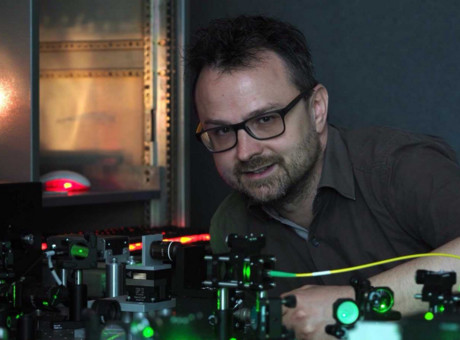Shine bright like a nanodiamond

Macquarie University researchers have made a single tiny diamond shine brightly — a behaviour known as superradiance — at room temperature, paving the way for nanodiamonds to be used in navigation, biomedical imaging, solar cells and more.
Writing in the journal Nature Communications, the scientists explained that superradiance (SR) is “a cooperative phenomenon which occurs when an ensemble of quantum emitters couples collectively to a mode of the electromagnetic field as a single, massive dipole that radiates photons at an enhanced rate”. The effect has previously only been seen at very low temperatures or in very large samples, the researchers revealed, and never before in diamonds.
Now, the scientists have discovered that nanodiamonds produce bright pulses of light due to defects in their crystal lattice — in this case, nitrogen atoms neighbouring vacant sites nested within the repeating carbon structure. Similar defects are what give coloured diamonds their hue.
“Diamond is a material — a cage for what is happening inside,” said Dr Thomas Volz, research leader on the study.
When these nitrogen-vacancy centres within the diamond lattice work together, like a well-coordinated orchestra, you get superradiance — a faster and brighter burst of light than you would otherwise expect.
So what’s so great about superradiance? Well, in a paper published last year in Nature Physics, the researchers showed that superradiant nanodiamonds (which are one thousandth of the breadth of a human hair) can be better trapped and moved around using focused laser light or tiny optical tweezers than non-superradiant ones.
The extra shine could also be useful in biomedical applications, according to Dr Volz, such as to track drug delivery pathways in the lab.
“You can attach drugs to nanodiamonds, and then use the concentrated pulse of light sent out by the nanodiamond to track where the drug is going in the sample,” he said. Nanodiamonds that send out a brighter burst of light will be more easily picked up by the detector, and tiny diamonds are much less toxic than some of the other drug markers used today.
Superradiant nanodiamonds also have potential uses in navigation, acting like tiny and very sensitive compass needles that emit more or less light depending on how they are aligned with the Earth’s magnetic field — an effect that would be amplified with brighter pulses of light. This behaviour could be used to develop magnetic sensors that would work out the location of an aircraft, for example, by mapping where it is in relation to the Earth’s magnetic field rather than by satellite.
The researchers even go as far as to suggest that the superradiance effect could be reversed, causing the nanodiamonds to absorb more light, more quickly — making them ideal for use in solar cells. The team are now working out how to create the brightest nanodiamonds possible.
Fully coupled annealing processor for enhanced problem solving
Researchers have designed a scalable, fully-coupled annealing processor with 4096 spins, and...
STMicroelectronics breaks 20 nm barrier for next-gen microcontrollers
STMicroelectronics has launched an advanced process based on 18 nm Fully Depleted Silicon On...
Chip opens door to AI computing at light speed
A team of engineers have developed a silicon-photonics chip that uses light waves, rather than...










